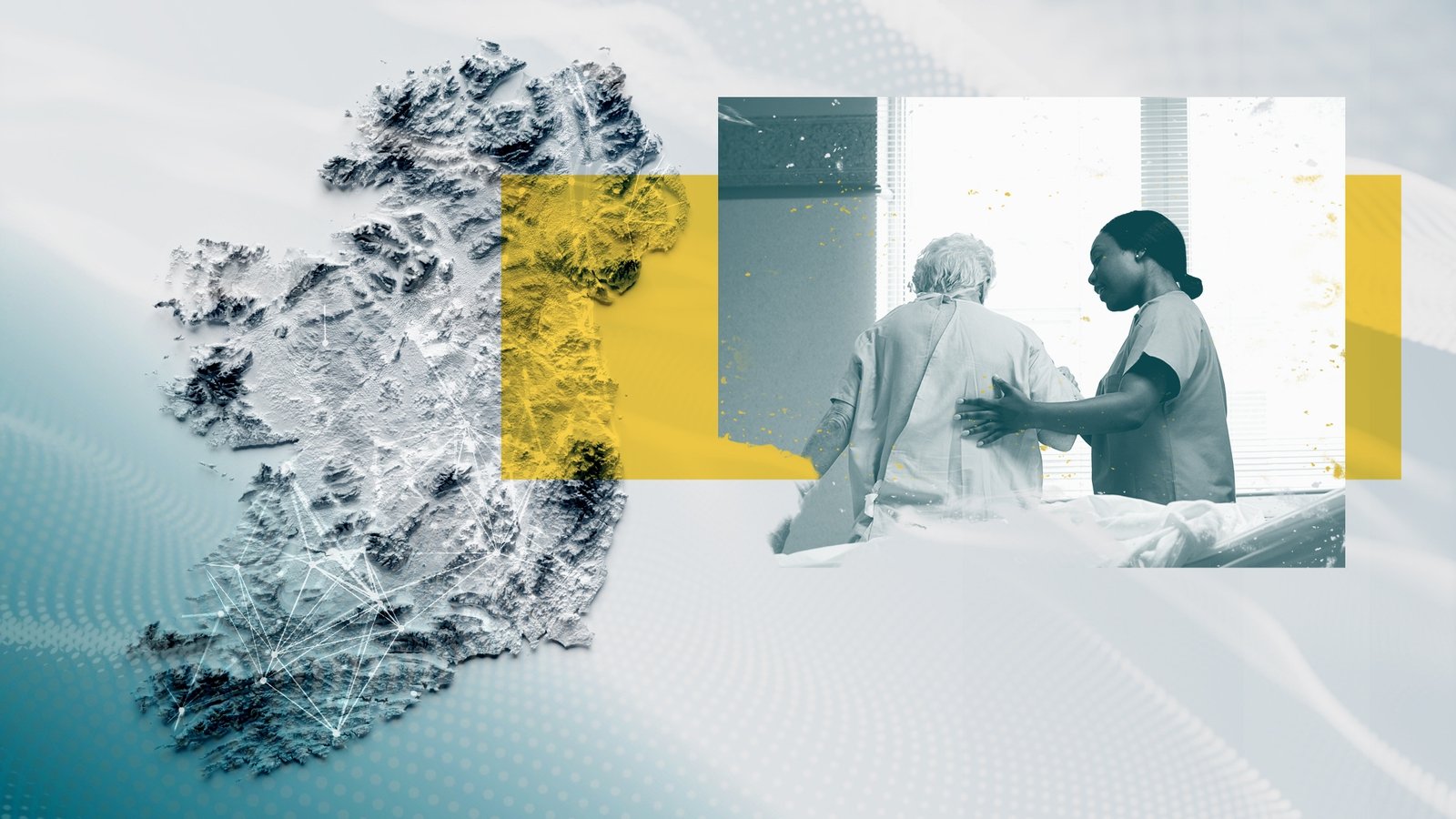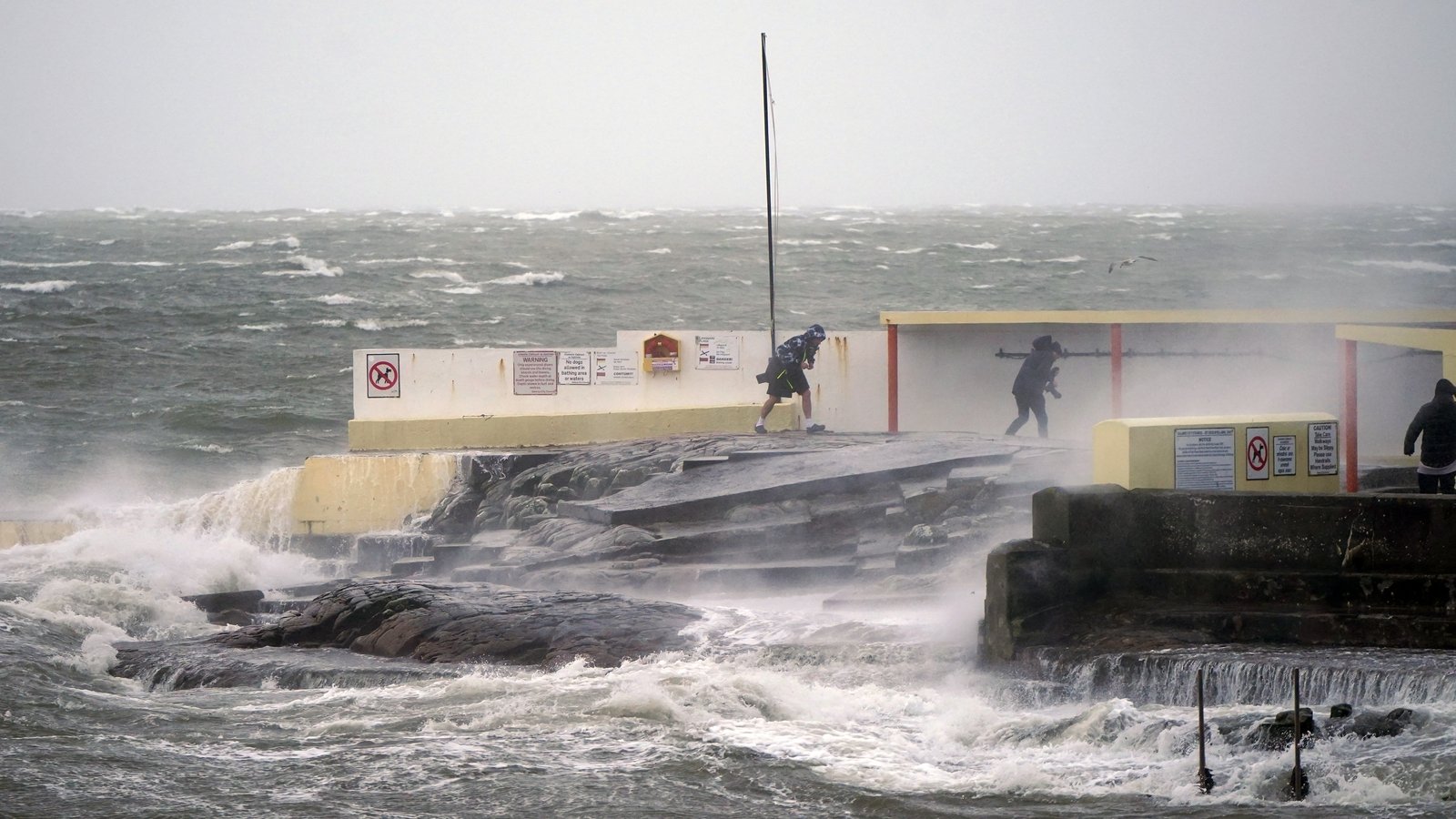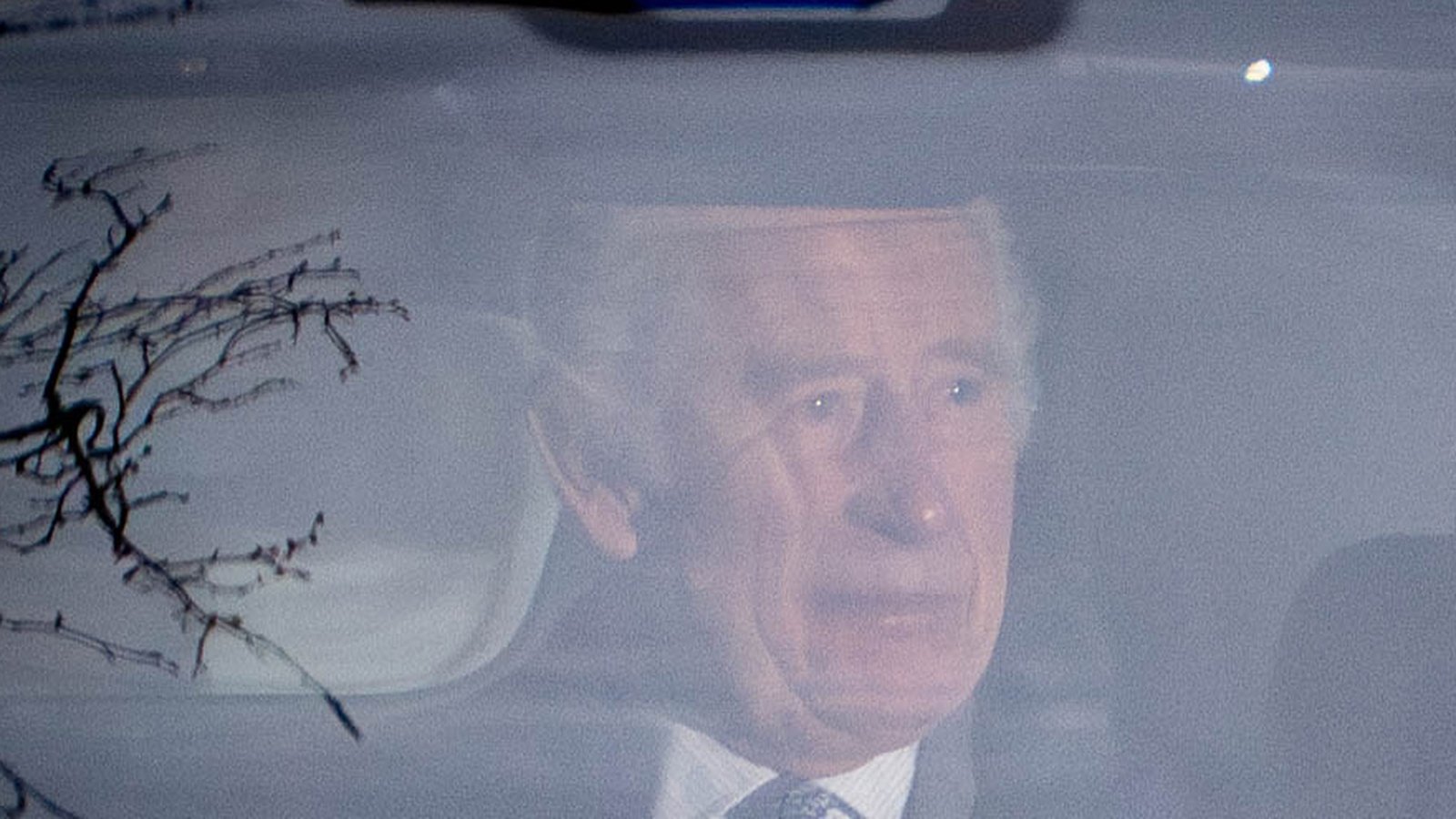Immigration and its growing role in Irish labour force

In a series of articles looking at the issue of immigration in Ireland, today RTÉ News Business Editor Will Goodbody examines the role immigration plays in Ireland’s economy and in the labour force.
In a technology packed control room, Johnson Joseph carefully studies the MRI screens in front of him, adjusting the machine as it slowly scans a patient.
“How are you keeping, are you okay there?” he asked the lady inside the tunnel of the scanner.
“You feel cold or warm or anything like that?”
It is a familiar procedure for Mr Joseph, who has been working at the Hermitage Clinic in Lucan in Dublin for most of the 17 years since he came to Ireland from India with his wife.
During that time, the radiographer has put the skills he developed in his native country to good use in the private hospital, which is part of the Blackrock Health Group.
So much so that over the years he has been promoted, and is now the hospital’s Deputy Radiology Services Manager and MRI clinical specialist.
“I’ve been involved in … starting cardiac MRIs here, I did a Masters in UCD that has been supported by Hermitage Clinic, I’ve been involved in developing articles that have been published in an American journal,” he explained.
“With my experience in India, having worked a lot in a Cath Lab and all, developing new skills, I can share my experience, what I have gathered from India.”

But it is not just the fulfilling nature of his work and what he has added to the healthcare system here that has made Mr Joseph feel at home in Ireland.
“Such a friendly atmosphere here that made us want to stay here more. Both my boys, they studied here in Dublin, I would say that they are fully Irish, they are born and brought up here. So I am proud to be Irish now,” he said with a chuckle.
He added: “For my two boys, they think this is their first home. For me it is a second home, for them it is their first home.
“100% I would like to go on and I would like to live and die here in Ireland and work for the Irish communities, stay with the Irish community. Respect a lot and love and affection to this country a lot!”
Mr Joseph is one of many Blackrock Health Group staff who have come to Ireland from overseas to work in one of its three hospitals in Dublin and Galway, and diagnostics clinic in Limerick.
Last year alone, the company recruited 150 new staff from outside the EU on work permits.
“We recruit here in Ireland, but … in the past couple of years, we’ve had to expand overseas,” said Laura Butler, who is a talent acquisition specialist for the group.
That is partly to do with the tight labour market, but also because the hospitals need very particular skills.
“The Irish market is very, very tight,” said Ms Butler.
She added: “What we do see is a lot of graduates, say nurses for instance, they will take a year or two and they might go abroad to train in other countries to broaden their skill sets, which is of course fantastic. The hope is that they might come back to us someday.
“And the reason why we do go abroad also is to see … what other skills that we can get.
“The likes of … the Middle East or Australia and New Zealand, India. There’s some fantastic clinical practises that are going on over there, and the skill sets that we can bring to Ireland are just fantastic.”

The Blackrock Health Group’s need for overseas talent is increasing.
“We’ve seen a lot of more nurses and … the likes of radiographers, cardiac physiologists and even medical scientists. They’re in such short supply here that there is an increasing need for us to go overseas to hire them and to bring them over,” Ms Butler added.
Blackrock Health Group is not unique in the healthcare sector in needing talent from overseas. Nor is the healthcare sector unique in the wider economy.
The unemployment rate is currently 4.9%, meaning the country is at what economists consider to be full employment.
That has left many organisations struggling to fill roles, making immigrant labour all the more important – a situation borne out in the statistics.
Over the past ten years there has been an 86% increase in the numbers of non-Irish people employed in the Irish economy.
Currently, of the almost 2.7 million people in employment here, 20% are non-Irish.
Of those, around 10% are from the UK, over half from the EU, with the balance from other parts of the world.
Immigration is a relatively recent phenomenon in Ireland, according to experts, with the levels typically remaining low and steady until the late 1990s and early noughties when the EU enlarged, allowing workers from more countries come here at will.
That, combined with the plentiful availability of work during the Celtic Tiger years, led to an influx of people from overseas seeking employment, particularly from eastern Europe.
“They also helped to sustain that Celtic Tiger period because otherwise we would have had wage inflation,” explained Dr Elish Kelly, senior researcher at the Economic and Social Research Institute.
“But they managed to keep wage inflation under control and they were working on a lot of the sectors that were driving economic growth at that time, such as construction sector and accommodation and food services.”
That trend slowed down following the financial crash though, with many of those recent arrivals leaving the country again as the economy tanked – acting as a form of release valve in the labour market.
And since recovery has taken hold, the profile of immigrants has been different.
“You’re not seeing as many people coming in now from eastern European countries, a lot of them are coming from outside the European area,” Dr Kelly said.
She added: “So you’re looking at Asia, you’re looking at Brazil, you’re looking at different countries like that and that has really started to increase over the last two, three years.”
The sectors most dependent on immigrant labour, according to the Central Statistics Office, are industry (14%), health (13.4%) and retail and wholesale (12.4%).
Read more:
Explained: Ireland’s migration policy and how it works
Hell or high water: Tackling Europe’s migration dilemma
What’s behind opposition to asylum seekers in Rosslare?
Immigration and the changing face of Dublin’s north inner city
But recent years have also seen rapidly growing demand for skills in the tech and communications industry, where 11.4% of those working here are from overseas – although last year did see that trend soften due to the cutbacks in the tech sector.
“So there’s obviously a labour demand issue where employers are looking for particular skills,” said Dr Kelly.
“And they’re not able to source their skills either within Ireland or within the European Union. So they’re now looking further afield to fill those gaps.”
Those that come here to work from outside the EU must secure employment permits to do so.
But to be able to get permission, the role they will be filling needs to be on a Government-compiled and regularly reviewed critical skills list.
“The Government is extremely careful to ensure that the system does not disturb the local labour market,” said Ángel Bello Cortes, a partner at international professional services and consultancy firm Fragomen, which specialises in immigration.
“I suppose the principle of, let’s say, community preference is one of the pillars of the system.”
And according to Mr Bello Cortes, who is from Spain, most businesses will not bring in a foreign worker unless they have to.
“The situation is any employer will always prefer to hire someone locally because these individuals are here and there will be no immigration costs,” he explained.
“So it’s only, I suppose, as a last resort that an employer will look further afield outside the European Economic Area.
“And that is covered in policy. Employment permit is only going to be granted where the individual is going to meet a very particular skill shortage and/or the employer has been unable to source that talent within the European area.”
Recent times have seen an increased focus on immigrants in Ireland, with anti-immigrant sentiment growing in some communities.
But despite this, Mr Bello Cortes said he believes Ireland remains an attractive place for people to come to from abroad to work.
“It is an EU country and Ireland has, you know, a robust immigration system and a pathway to citizenship as well,” he said.
“So absolutely it is. It is seen as an attractive destination.”
When it comes to wages, there is no up-to-date conclusive research about whether immigration leads to downward pressure in certain sectors.
“It hasn’t been looked at in about ten years and at that time the findings were mixed,” said Dr Kelly.
“So there was no conclusive findings of whether it was having a positive or negative effect.
“I think though at the moment what you’re finding is that there’s such labour shortages … that it’s unlikely that they’re driving down wages.
“We also have the minimum wage, which kind of acts as a floor of that as well.”
But ESRI research published last year found migrant workers do not always fare as well as Irish employees when it comes to pay and conditions.
For starters, immigrants are generally more likely to be found in lower quality jobs and typically earn at least 22% less per hour than Irish people.
“That gap then is higher for Eastern European … and it’s also larger if you’re an immigrant female,” said Ms Kelly.
“We’re also finding that they’re more likely to work shift work, they’re more likely to be employed in temporary jobs … and they have lower trade union membership levels.”
The biggest unknown when it comes to the labour market though is how many undocumented or illegal immigrants are working here.
An ESRI study in 2017 found the extent of illegal work in Europe and Ireland is not easy to quantify, owing in part to the clandestine nature of the problem.
It concluded that data on the size of the irregularly resident population or the extent of illegal employment of non-EU nationals in Ireland was not currently available from an official or objective source and the position has not changed since.
Although it did refer to a study by the Migrant Rights Centre Ireland in 2020 which estimated that there were between 17,000 and 20,000 undocumented migrant adults living and working in Ireland.
What is clear though is that the economy’s need for legal immigrant workers only looks set to increase in the years ahead.
A recent ESRI study pointed to how the National Development Plan needs extra capacity, but one of the constraints on expanding it is insufficient labour.
“Obviously there’s issues around accommodation and other services. That’s not an immigrant issue,” said Dr Kelly.
“That’s an issue with Ireland in general, because you’ll have a lot of Irish people who are not able to access housing or access services.
“But if we don’t have immigrants, we can’t undertake those projects. And obviously it has implications as well in terms of wages, if you don’t have the labour coming in, it’s obviously going to drive up wages.
“So you need the labour to undertake the work, you need the labour to keep wages under a certain amount of control so that you can sustain economic growth.”




